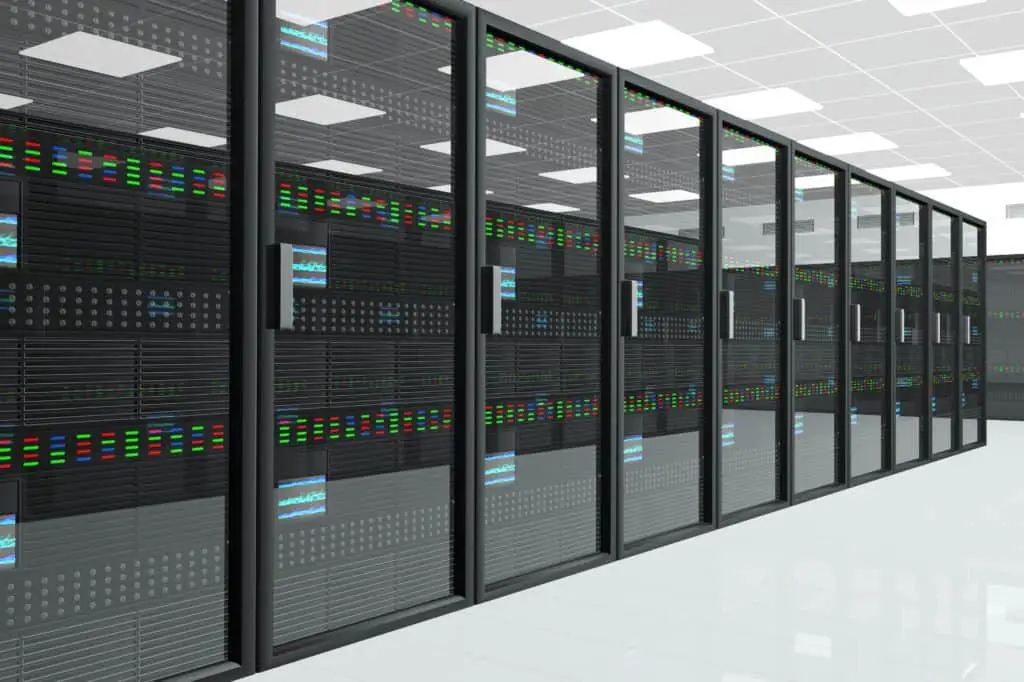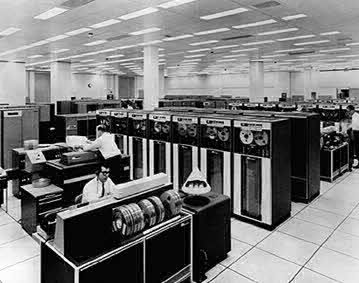Definition of Mainframe in Network Encyclopedia.
What is Mainframe?
A Mainframe is a general term for a high-level, typically large computer that is capable of performing demanding computational tasks. Vendors of mainframes include IBM, Unisys, DELL and Hewlett-Packard.

Mainframe computers were historically operated as centralized computing systems to which dumb terminals were attached through local network connections and remote dial-up connections. Users entered text-based commands into these terminals, and the terminal forwarded the commands to the mainframe, where all the processing was performed.

The results of the processing were returned to the terminal and displayed. Modern mainframes offer terminal communication but also support connections to “smart terminals” – desktop computers that are connected to the mainframe but also have their own computing power.
The term originally referred to the large cabinets called “main frames” that housed the central processing unit and main memory of early computers. Later, the term was used to distinguish high-end commercial machines from less powerful units. Most large-scale computer system architectures were established in the 1960s, but continue to evolve. Mainframe computers are often used as servers.
IBM’s line of mainframes has evolved to the point that its System/390 mainframe platform can be used for distributed client/server computing and Web-based computing. A modern mainframe can thus be considered a very big server that can easily be integrated with the latest Windows 2019 Server or other servers into local area networks (LANs) or wide area networks (WANs).
Mainframe today
How Mainframes differs from Supercomputers?
A supercomputer is a computer at the leading edge of data processing capability, with respect to calculation speed. Supercomputers are used for scientific and engineering problems (high-performance computing) which crunch numbers and data, while mainframes focus on transaction processing. The differences are:
- Mainframes are built to be reliable for transaction processing (measured by TPC-metrics; not used or helpful for most supercomputing applications) as it is commonly understood in the business world: the commercial exchange of goods, services, or money. A typical transaction, as defined by the Transaction Processing Performance Council,[27] updates a database system for inventory control (goods), airline reservations (services), or banking (money) by adding a record. A transaction may refer to a set of operations including disk read/writes, operating system calls, or some form of data transfer from one subsystem to another which is not measured by the processing speed of the CPU. Transaction processing is not exclusive to mainframes but is also used by microprocessor-based servers and online networks.
- Supercomputer performance is measured in floating point operations per second (FLOPS) or in traversed edges per second or TEPS, metrics that are not very meaningful for mainframe applications, while mainframes are sometimes measured in millions of instructions per second (MIPS), although the definition depends on the instruction mix measured. Examples of integer operations measured by MIPS include adding numbers together, checking values or moving data around in memory (while moving information to and from storage, so-called I/O is most helpful for mainframes; and within memory, only helping indirectly). Floating point operations are mostly addition, subtraction, and multiplication (of binary floating point in supercomputers; measured by FLOPS) with enough digits of precision to model continuous phenomena such as weather prediction and nuclear simulations (only recently standardized decimal floating point, not used in supercomputers, are appropriate for monetary values such as those useful for mainframe applications). In terms of computational speed, supercomputers are more powerful.
IBM Definition of Mainframe today
Mainframes are computers. At their core, mainframes are high-performance computers with large memory (RAM) and processors that process billions of simple calculations and transactions in real-time.
The mainframe is critical to commercial databases, transaction servers and applications that require high reliability, scalability, compatibility and security – the core design values of the mainframe.
Reliability
Mainframes have 99.999% uptime, or less than 1 minute of unplanned downtime per server per year. The mainframe’s “Mean Time Between Failure” is measured in decades.
Scalability
Run up to 8,000 virtual machines on a single server with 160 I/O cards 320 I/O channels. A single mainframe is equivalent to approximately 1,500 x86 servers.
Performance
IBM z14, for example, has 14 nanometer cores, 170 configurable processors, 6.8GB of cache memory, 32TB of main memory and 10 cores per chip to process up to 30 billion transactions daily.
Security
IBM z14 mainframes, for example, seamlessly encrypts 100% of application, cloud service and database data. It has 8.5 times the interception level of alternative platform solutions with 81% less effort.